A Guide of Best Spinning Reel Reviews
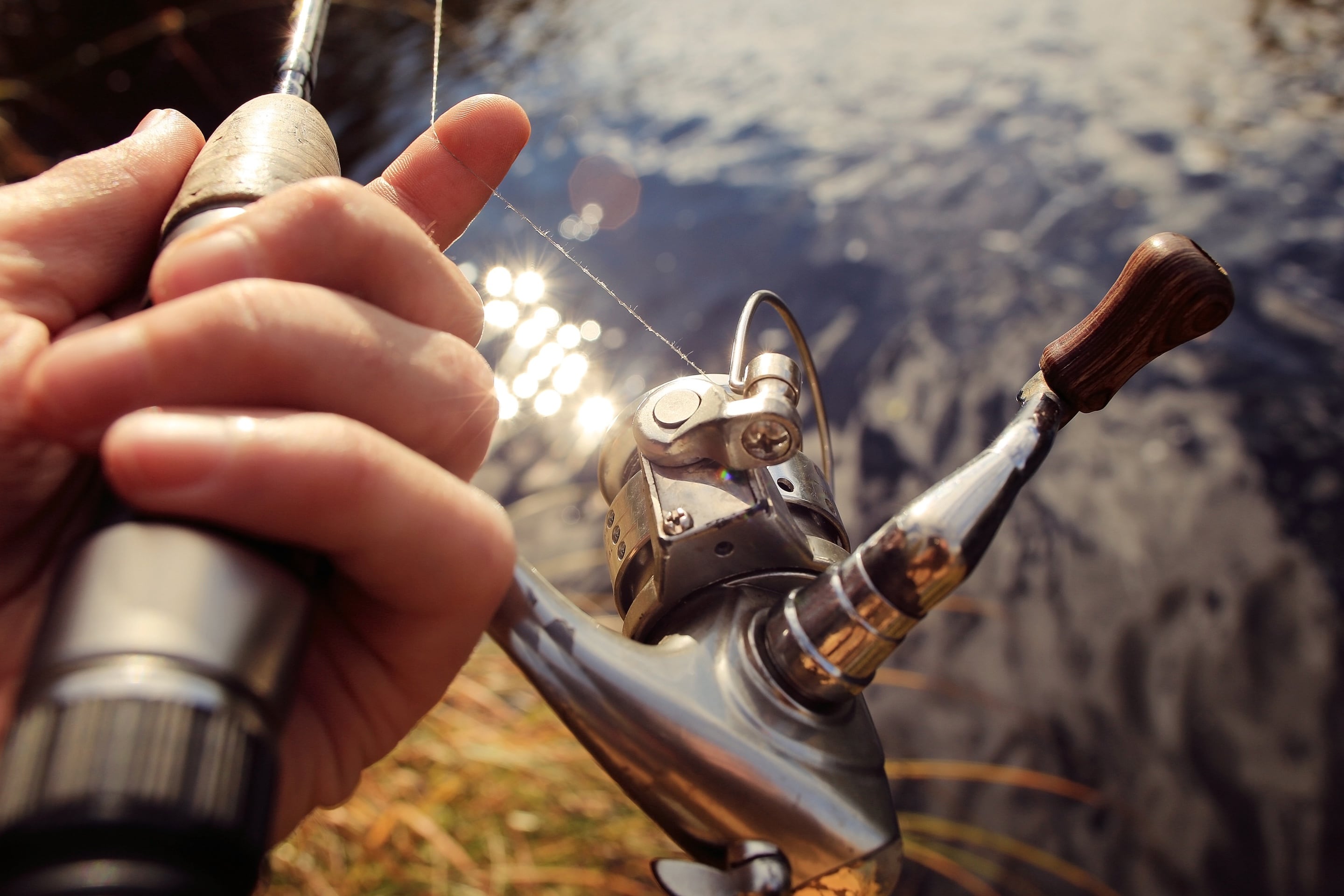
There are a few different categories of reels and each has their own unique strengths. While some of the differences may seem very subtle, selecting the proper reel can really help improve your chances of success on the water, and simply speaking, may just make your time out on the water more enjoyable.
In this article, we will focus on a very common type of fishing reel: the spinning reel. These reels are typically combined with a spinning rod, and personally, this is the reel I’m most comfortable with, although I’m starting to become keen on baitcasting reels as well. I will expand on this in further detail below.
The most obvious differences that you can see between different types of reels are the parts of the reel itself, as well as the general function of the reel. In order for this to make more sense, we will identify and discuss some of the main parts of a spinning reel and how they differ from other reels. We will also highlight a few of the best spinning reels at different price points, so you have a sense of what is available and what may fit your budget. If you’re looking for an ultralight setup, please check out our reviews of the best ultralight spinning reels.
4 Best Spinning Reel Reviews
Basic
Shimano Sierra Spinning Reel
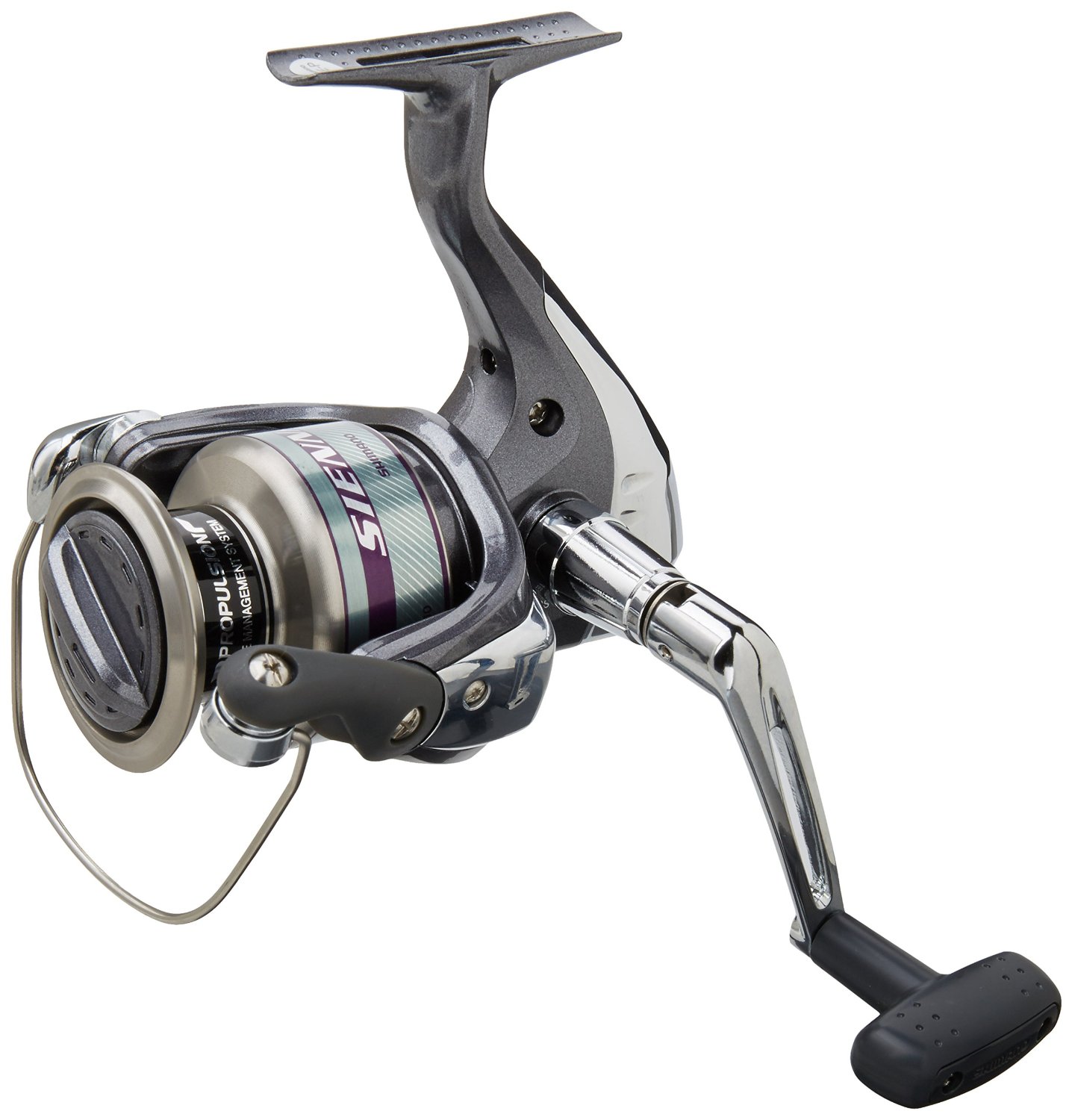
Pros
- thumbs-o-up
- thumbs-o-up
- thumbs-o-up
- thumbs-o-up
- thumbs-o-up
Cons
- thumbs-o-down
- thumbs-o-down
- thumbs-o-down
- thumbs-o-down
General Consensus
The Shimano Sienna front drag spinning reel is your basic lower-end spinning reel. To be clear, that doesn’t mean it’s bad, rather, there just isn’t any fancy bells and whistles, which isn’t always necessary anyway.
This reel comes in many different sizes to help accommodate your line capacity. For example, the base model has a line capacity ranging from 2/210 – 6/110, while the Shimano Sienna 4000FD boasts a line capacity ranging from 8/240 – 12/160.
The components are mainly graphite, which is standard for this price point. The graphite will offer a lightweight feel and good performance, but may not be as durable. Moving components may need to be greased sooner than some other reels.
Overall, this is a best spinning reel from a very reliable fishing brand, and is more well-suited to smaller fish, likely those found in fresh water (e.g. bass, perch, catfish, salmon. While it may not last as long and isn’t anything special, it will be tough to find something cheaper.
Therefore, we recommend the Shimano Sienna spinning reel for beginners, those you want a spare reel, those on a very strict budget, or anyone fishing relatively small fresh water fish that simply want good value.
Mid-Range
Okuma ABF Avenger Spinning Reel
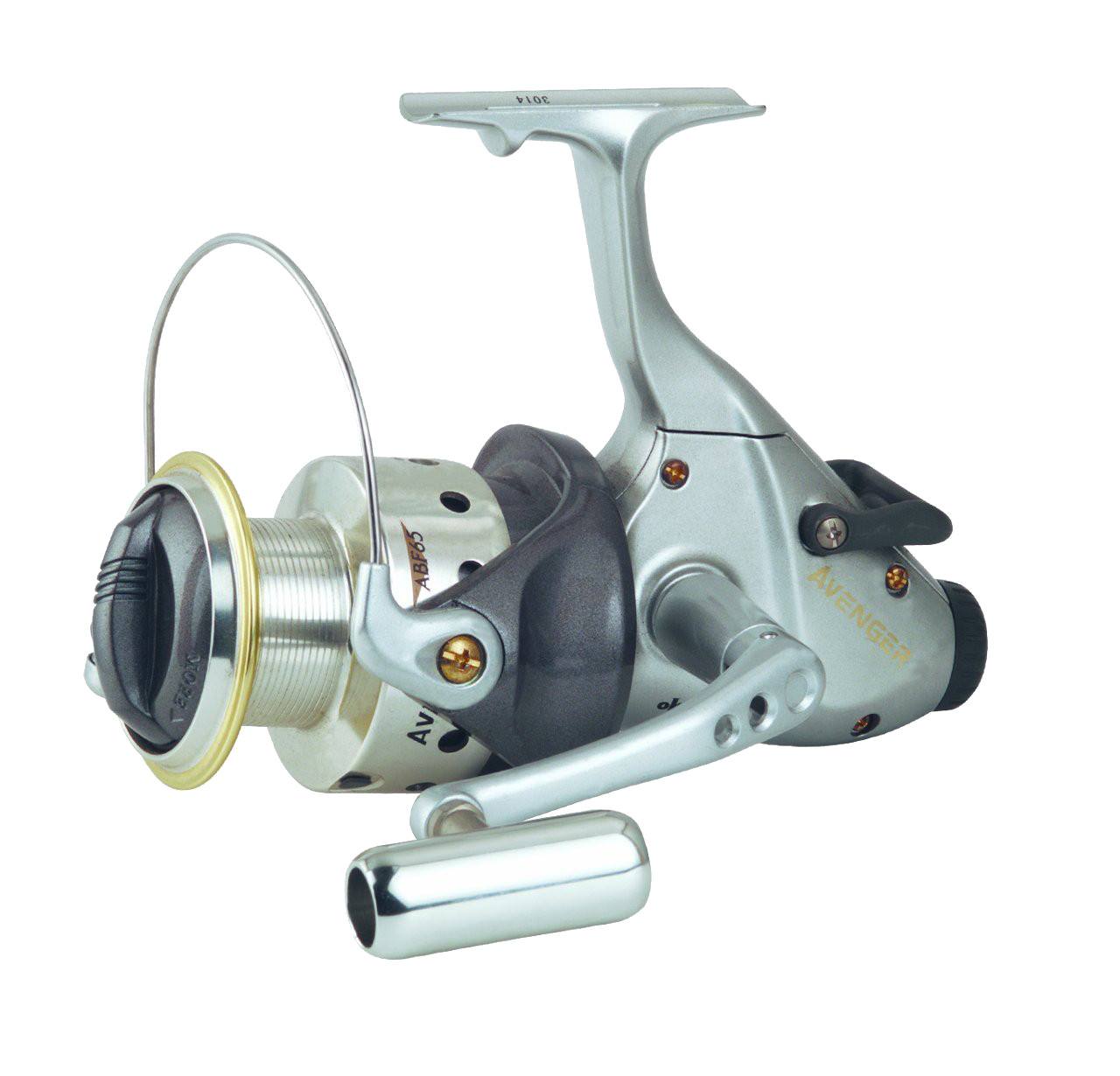
Pros
- thumbs-o-up
- thumbs-o-up
- thumbs-o-up
- thumbs-o-up
- thumbs-o-up
- thumbs-o-up
Cons
- thumbs-o-down
- thumbs-o-down
- thumbs-o-down
General Consensus
This is an all-around solid spinning reel created by a company that values innovation and incorporating new features. In this case, the patented live line bait feeding system is rather unique. It’s basically lets the fish bite the bait and run without feeling any drag. Then once you are ready to set the hook, you simply flip a lever to engage the traditional front drag system. Some people find this increases the chances of setting the hook firmly.
There aren’t many reported issues with this spinning reel, but one common problem is the handle may become loose after a while, especially if you have been reeling in some big ones. While this can be fixed, it may decrease the usable lifespan of the reel.
Overall this is a great spinning reel for the price. While it’s not a top-of-the-line reel, the added features like the bait feeding system could really appeal to some and does help with achieving a firm hookset. Therefore, we would recommend the Okuma Avenger ABF for those looking for a really nice reel without completely emptying the wallet.
High-End
PENN Battle 2 Spinning Reel
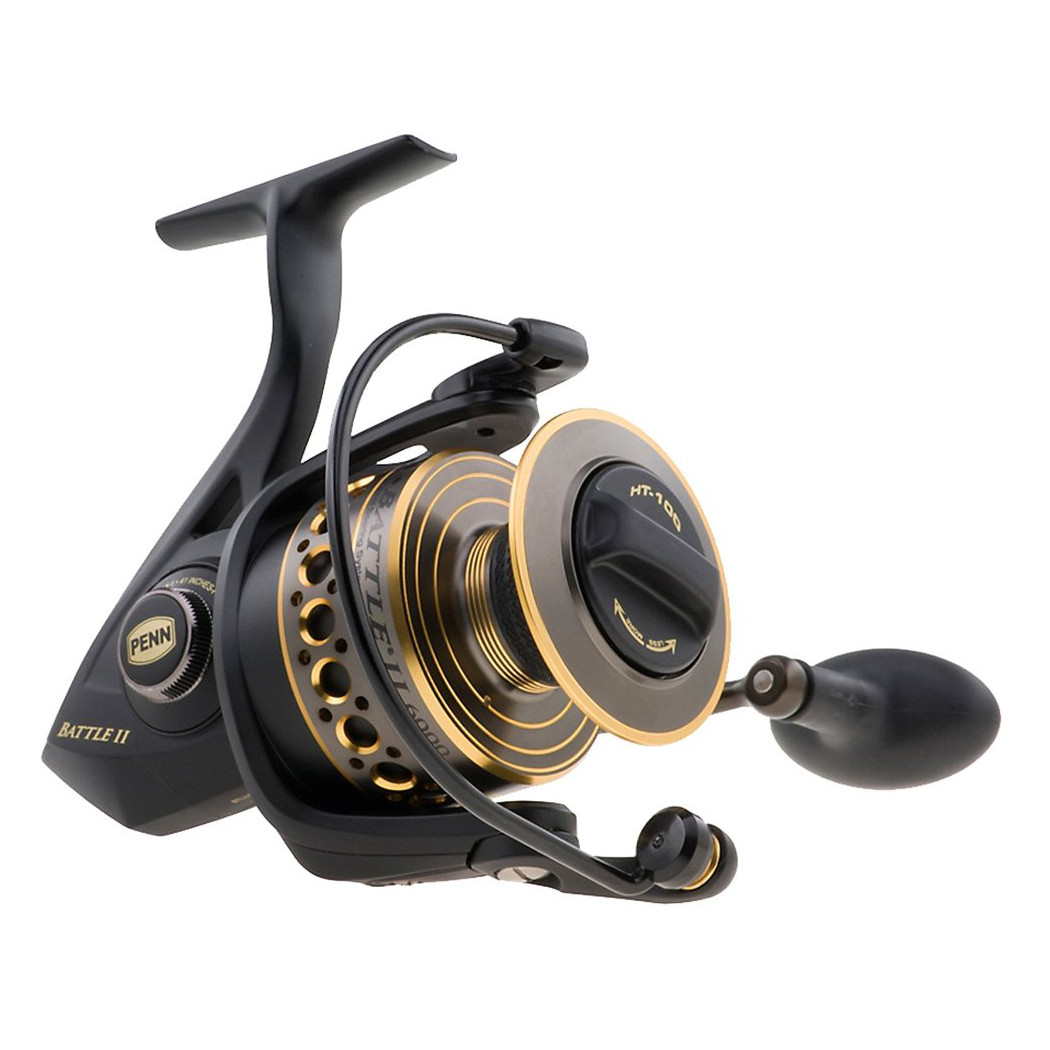
Pros
- thumbs-o-up
- thumbs-o-up
- thumbs-o-up
- thumbs-o-up
- thumbs-o-up
Cons
- thumbs-o-down
- thumbs-o-down
General Consensus
This is a great spinning reel that is built with quality materials that ensure solid durability. With 5 sealed stainless steel ball bearings and all components greased with Penn’s proprietary grease, the smoothness is excellent right out of the box.
PENN’s HT100 Versa Drag washers are keyed into the spool such that both sides of the washers can be used. This allows for higher maximum drags and a larger range than lower-grade spinning reels.
Similar to other reels, there are many different sizes/variations of the same model which allows you to select something more specific to your usual fishing holes. Line capacities can range from 275/2 – 230/30 (mono) and 160/6 – 345/80 (braid) depending on the exact reel.
While the vast majority of customers provide glowing reviews about the PENN Battle II spinning reel, there is the odd complaint about performance issues after a while (very rare). Some find that if you use it heavily on a very regular basis it may start to stick way earlier than expected, but these problems seem to be quite rare.
Overall, The PENN Battle II is a very nice spinning reel built with quality components and backed by a reliable brand. While there is some good value in this reel, it’s still on the more expensive end, and therefore we only recommend this reel for those who know they need something a little higher-end and have tried using at least one reel before (just to ensure you know you will benefit more from this reel than a more basic and cheaper reel).
Elite
Shimano Stradic CI4+ Spinning Reel

Pros
- thumbs-o-up
- thumbs-o-up
- thumbs-o-up
- thumbs-o-up
- thumbs-o-up
Cons
- thumbs-o-down
- thumbs-o-down
General Consensus
This is an amazing spinning reel constructed by a very popular fishing gear brand. Simply put, all of the components are high quality and offer excellent performance and durability. Shimano has incorporated lots of reinforced carbon fiber into the design, providing a reel that is stronger and lighter than most, and as a bonus, there is a way smaller risk of corrosion since the vast majority of the components are not metal.
Simply put, the Shimano Stradic CI4+ boasts all the best features of a spinning reel and is extremely well-liked by customers. At this price point, not only are you paying more for higher quality materials and performance, as well as increased durability, but you are also rewarded with a lower occurrence of annoying issues. The only issue we have heard of is the bail sometimes sticking when it’s open, but this is rare and isn’t a big deal (actually sort of typical of Shimano). Otherwise, the feel is great and the lighter weight actually makes a big difference after stringing together a few full days of casting!
Overall, this is a top-of-the-line spinning reel that has enough different sizes/models available to tend to many different anglers’ needs. The main drawback is the expense, but if you know you need a higher-end reel, you definitely get what you pay for with the Shimano Stradic CI4+.
Parts of a Spinning Reel
Please refer to the image below identifying some of the major parts of a spinning reel. These parts will be discussed in detail below the image. Furthermore, we have also added a video originally posted by Anglers Mail TV that we think could be really helpful for some fishermen who are just starting out.
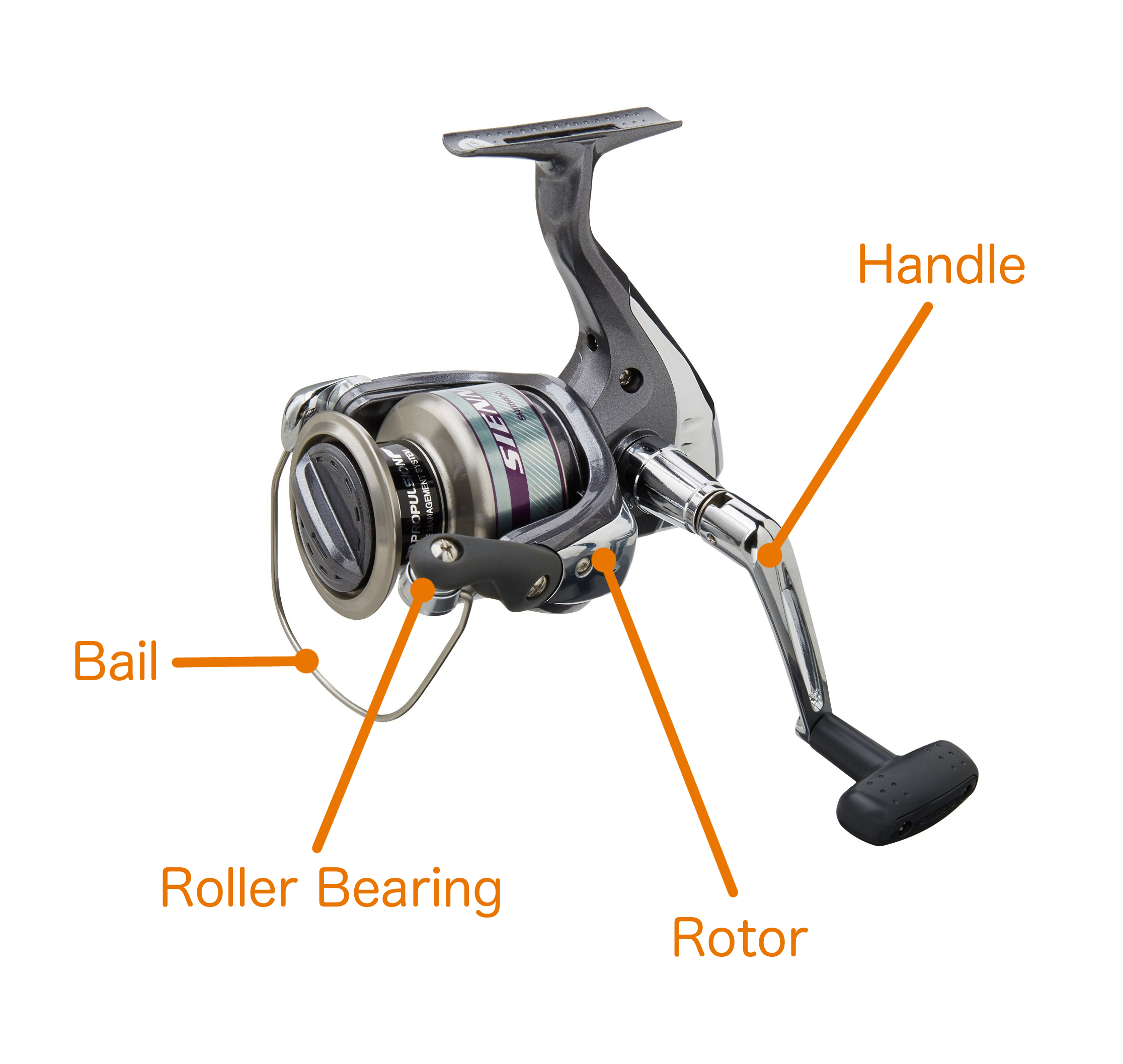
Handle
This seems pretty straight forward, and it is, but there are a few things to point out that may help you select the best spinning reel for your budget. The handle, which is sometimes also referred to as the crank, is the part you physically spin in order to draw the line back in. Most spinning reels now have handles that can alternate sides, so it usually doesn’t matter if you are right- or left-handed. However, if you are buying an older model second-hand, just double-check that this feature is an option (if it matters for you).
Bail
The bail is the piece of the reel that allows or restricts the line movement. When the bail is open, the line can easily come off the spool. Usually you will only have the bail open when casting. The bail on most spinning reels will automatically close once you begin reeling in the line (turning the handle). As such, a closed bail means you can reel in the line like normal, and when a fish bites and the hook is set, it won’t simply swim away with your entire line (Generally speaking. See section on Drag for more info).
When looking for a good spinning reel, you don’t need to be too concerned about the bail itself. They are usually made out of aluminum, but you can get other materials as well. The main thing you will want to pay attention to are reviews about the “stickiness” of the bail, that is, whether or not is known to have problems with the automatic closure.
Line Roller
In the diagram above, we pointed out the roller bearing for the line roller. In cheaper models, bearings are often replaced with bushings, but they are both meant to serve the same overall purpose: allow the line roller to roll with ease.
The line roller itself is important because it guides your fishing line back into the spool. It may seem odd at first that it needs to roll, as fishing line should slip on metal rather easily, but it’s not so much about bringing the line as it is about controlling the line.
This can be evident in older reels that haven’t been maintained in a while. If the line roller is constantly sticking, this will increase the likelihood that your line will tangle, which is a major piss-off. A smooth roll will help ensure the line is brought back into the spool both tight enough and without any tangles.
Any spinning reel you buy should have a line roller. The main thing to look out for is whether or not it has bushings or bearings. Lower-end spinning reels tend to replace the bearings with bushings, and while there is actually some debate over this, the general consensus is that bearings are better than bushings.
Ball Bearings
The number and type of roller bearings can affect a reel’s performance. More ball bearings will allow for a smoother and faster spin/retrieve, so generally speaking, the overall consensus is that the more ball bearings the better.
There is quite a range of reels with different bearing counts, but most fall within 3-7 bearings. If trying to decide whether or not it’s worth it to pay a bit more for a higher bearing count, we definitely think it’s worth it to make the jump from about 3 to 5 if you have room in the budget. Any jump up will be a noticeable difference, but it’s nice having a reel with a stable retrieve that doesn’t annoy you, so we typically opt for something with at least 4-5 bearings.
One way you might see bearing count reported is like the following: 6(+1). This means there are 6 internal ball bearings that assist with the retrieve, while there is another ball bearing for the line roller helping to ensure a tight tangle-free roll.
Spool
The spool of a spinning reel is where the line sits. Different spinning reels will have different sized spools. Even one model of spinning reel can have many different sizes, with one of the main differences being the size of the spool. A large spool will have a larger line capacity (more info on line capacity below) than a small spool.
Another important aspect of spool size worth noting is the width:height ratio, even if you simply “eyeball” it. Many fishermen find a wider spool performs better, but not many know why. However, Field & Stream published a nice article a few years ago explaining this. Without getting too deep into the explanations, a wider spool should increase casting distance and lead to less tangles (longer portion of line per rotation), and a reel with a wider spinning spool may also be able to use smaller components, making the reel on a whole a little bit lighter.
Line Capacity
Line capacity is how much fishing line the spool on your reel is capable of holding. While this is fairly intuitive, the way line capacity is reported may not be familiar to everyone, but it’s really easy to learn.
Line capacity usually involves two numbers. One number is for the length of line that the spool is capable of holding. However, since different test (strength) lines may have different thickness, the length of the line that can be held depends on the test of the line, and this is the other number.
For example, if you see something like 6/110, this means that the spool can hold 110 yards of 6-pound test line. One additional factor to consider is whether the line is monofilament or braided. This is usually stated explicitly, but the main thing you need to know is that a spool will be able to hold more mono line than braided line. We will provide more specific information and tips about fishing line in a subsequent article, so check back soon!
Gear Ratio
You may see the gear ratio often reported in spinning reel product descriptions. This doesn’t mean you are going to be “shifting gears”, but rather, it gives you an indication of how many times the spool rotates for every complete rotation of the handle. For example, a gear ratio of 6:1 would mean that the spool rotates 6 times for every 1 time that you turn the handle completely.
So how does gear ratio affect the performance of a spinning reel? Let’s say you are using a gear ratio of 6:1. You’re at a buddies place and decide to go fishing, but you don’t have your rod, so you borrow your buddy’s rod which has a gear ratio in the reel of 5.3:1 (spool rotates 5.3 times for every handle turn). What you will notice is that the line isn’t reeling in as fast, and therefore you need to turn the handle faster in order to match the speed you would be used to on your 6:1 reel.
So what else does the gear ratio affect? While the retrieval speed is important, so is the power depending on the water depth. For example, let’s say you are bottom fishing or trolling in rather deep waters. It may be more beneficial to use a lower gear ratio, as this will provide more power when reeling in the fish, which could be quite beneficial even if the speed is a little slower.
On the other hand, if you are an angler working shallow waters or closer to the surface, you may want to consider a higher gear ratio. This will allow you to retrieve the line faster when fighting a fish, which can be nice to have especially when the fish swims in the direction of the boat and provides some juicy slack on the line.
A best spinning reel will likely have only one gear ratio, but unless you’re an expert angler with lots of experience fighting different types of fish at different depths, this likely won’t be a problem, as it’s best to practice the proper technique first before relying on features of a reel. However, if you do prefer some flexibility in the gear ratio, many higher-end spinning reels will offer dual gear ratios that you can easily change. You may also see this referred to as “two-speed”, “multi-gear”, “multi-speed”, etc.
